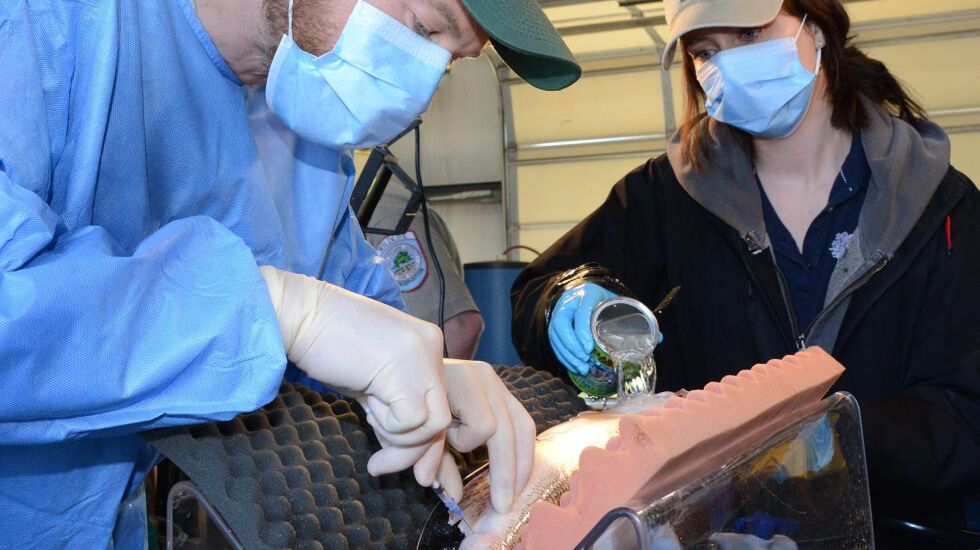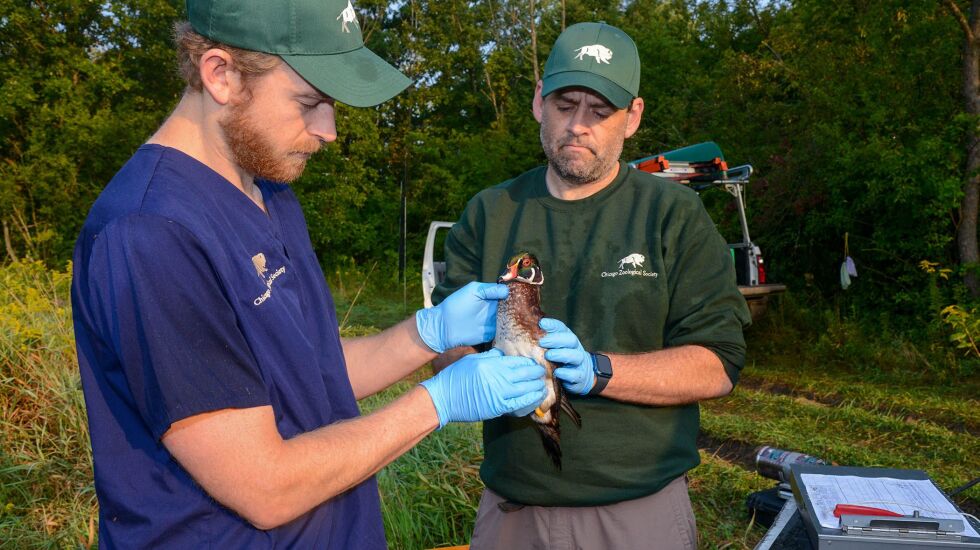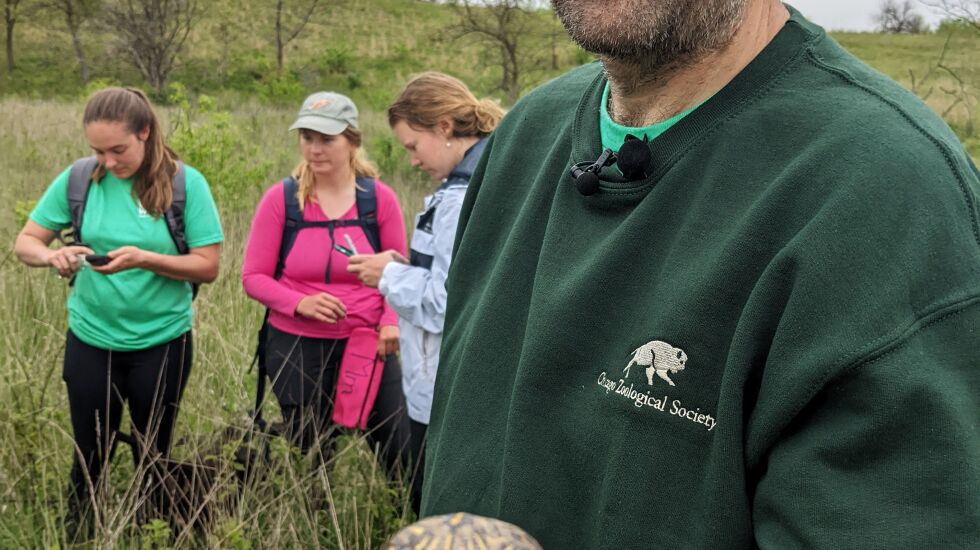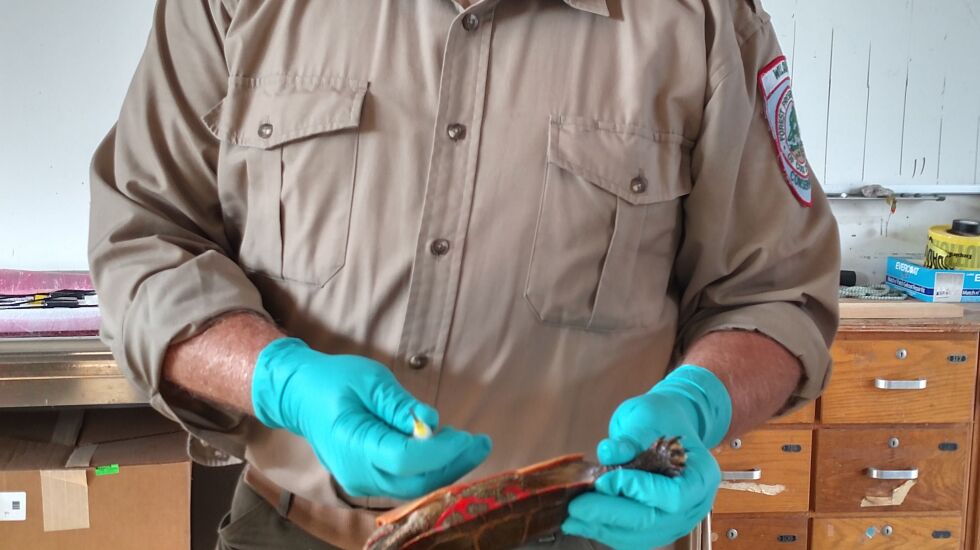
Dr. John Winter took a moment to consider his most memorable work day in the last year.
“It was the day we implanted radio transmitters into fish in Cook County to get a sense of what habitat they favor and are using,” he said.
That was working with Brookfield Zoo staff and biologists from the Forest Preserves of Cook County on two surgical tables to insert 10 transmitters in muskie, walleye, largemouth bass and channel catfish.

In July last year, Winter became the pioneer in the nation’s first wildlife residency program accredited by the American College of Zoological Medicine. The Chicago Zoological Society, which manages Brookfield Zoo, the FPCC and and the University of Illinois College of Veterinary Medicine collaborated on Illinois Zoological and Wildlife Health Management Residency.
“This is the first residency program for free-ranging wildlife veterinarians in the United States,” Dr. Matt Allender said. “This residency allows us to train them and get them out into the field.”
Allender, a clinical veterinarian at Brookfield Zoo and director of the Wildlife Epidemiology Lab at the U of I, is the primary mentor to Winter.

In the first year of the initial three years, CZS already lists important accomplishments by Winter: helping to find a new virus found in invasive red-eared slider turtles and identified for the first time in native, endangered Blanding’s turtles; locally tested coyotes are negative for canine influenza, so they cannot be the source of cases found in local domestic dogs; and adenovirus—a disease that can affect the reproductive health—has been discovered for the first time in Illinois wood ducks.
For decades, the FPCC has participated in the waterfowl banding group, which in Illinois is with wood ducks and Canada geese.
“By adding Dr. John to the group, we can swab and [assess] each one,” said Chris Anchor, senior wildlife biologist with the FPCC. “In this case, duck diseases we didn’t know about. Waterfowl do everything they can do to hide any weakness or they are picked out of the herd. We can detect things proactively. We did the same thing with Blanding’s turtles.”

That’s critical in Cook County, where poachers and mesopredators (raccoons, skunks, foxes, etc.) have diminished Blanding’s turtles to only two breeding populations. Some work is studying red-eared sliders, which cohabitate the same marches and same water column as Blanding’s.
“We found things very detrimental to Blanding’s in the sliders,” Anchor said. “It’s a whole another layer of understanding of what is happening on the landscape.”
Winter’s work with wood ducks is ground-breaking and Winter will present about coyotes and wood ducks in Cook County next week at the International Wildlife Disease Association’s annual conference.
Allender gave metrics of John’s impact in the first year: examining 775 individual wildlife animals within forest preserves: mussels, snakes, songbirds, otters, coyotes, deer, raptors and waterfowl. He collected blood on more than 300 animals. In pathogens surveillance, he swabbed the mouth of about 500 animals. He did physical examinations, had a stethoscope on, about 600 animals.
“The program isn’t designed to save one animal, it is save all animals,” Allender said. “It is not a rehab center.”
Where this innovative residency is set matters.
Most literature on wildlife comes from rural settings, which, as Anchor notes, is “180 degrees different than in urban settings” I assure you that deer in the wild act nothing like the cute ones in the parks nor do wild coyotes act like the urbane urban coyotes. It’s like they’re a different species.
Anchor pointed out, most years Cook County has the highest densities of mesopredators n Illinois.
“As diseases move across the landscape, it is a completely different in the urban environment,” Anchor said.
Winter always loved animals, but there was no aha moment on becoming a veterinarian
“I gradually found my path through college and veterinarian school,” John said. “I didn’t entirely know this career existed until I started working with Matt on free-ranging turtle health on Blanding’s turtles.”
Winter grew up in Fort Myers, Florida. He earned a Bachelor’s of Science in zoology and psychology from the University of Florida. His doctorate came from the U of I veterinarian school, where he worked in Allender’s lab as a student, including studying viruses in Blanding’s and the health of eastern box turtles. He had an internship on small animals (dogs and cats) in Seattle, then a second internship in wildlife medicine, surgery and rehabilitation at Washington State University.
In residency, most of his work is with free-ranging wildlife, but he does practice clinical zoo medicine and works in advanced molecular diagnostics.
“He can end up working on orcas on the West Coast or bison and elk in Wyoming or urban wildlife in New York or Chicago,” Allender said.








